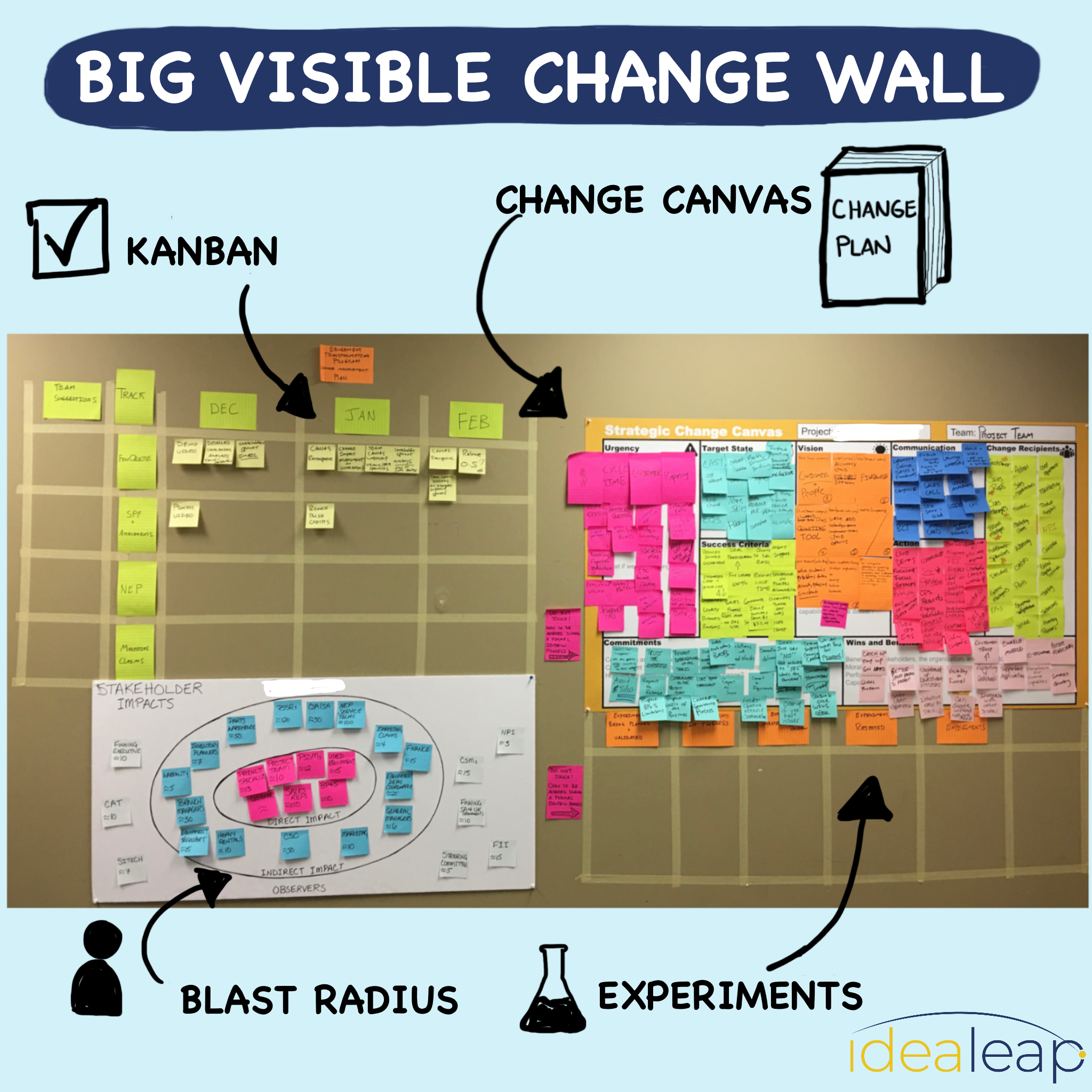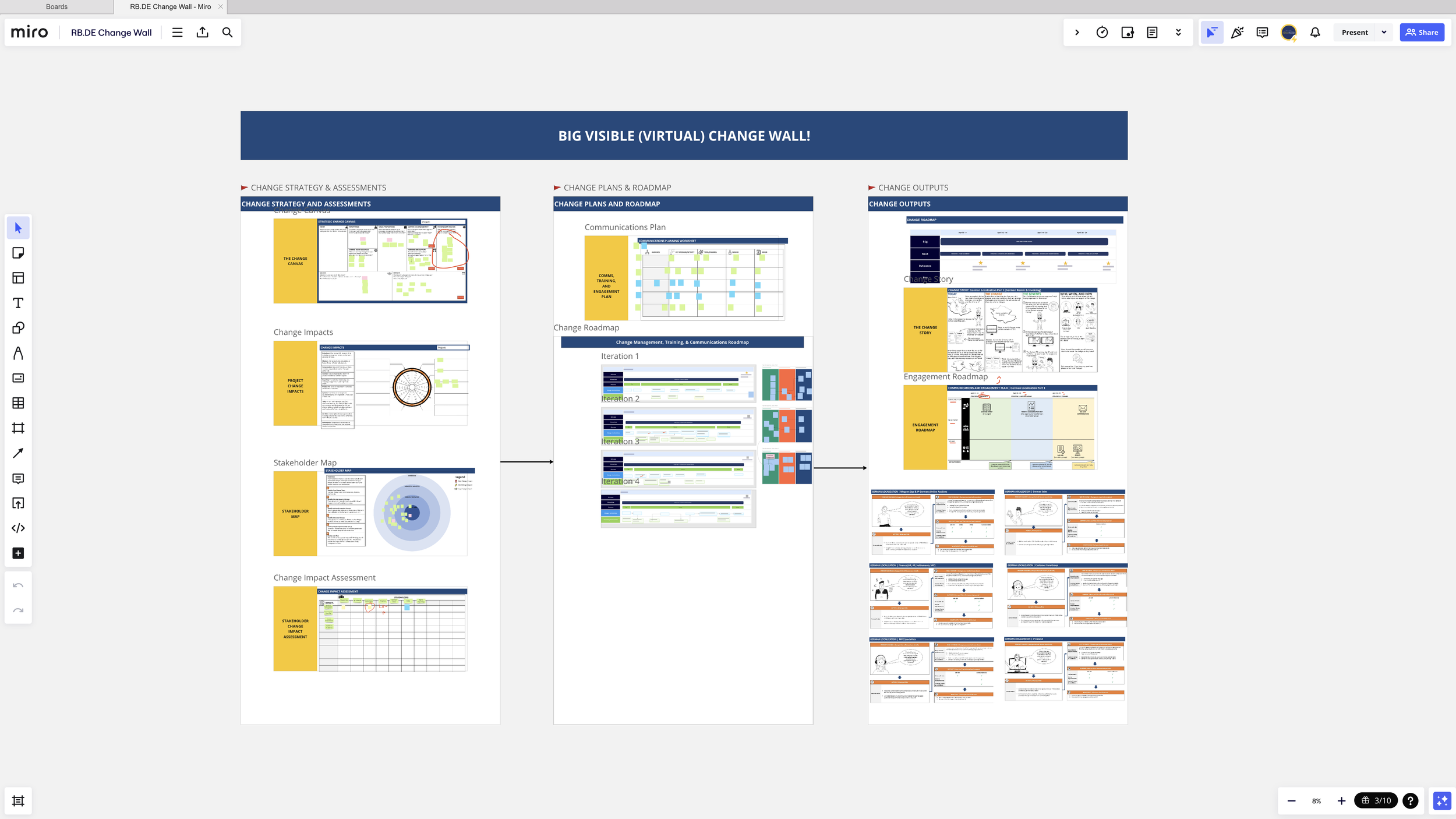The Purpose of Change Management
CONTEXT
Imagine that you have a project kickoff meeting coming up and the sponsor has requested that you take a few minutes to explain the importance of change management to stakeholders.
The usual course of action is to create a few slides explaining the stakeholder journey, adoption, communication, benefits realization,... blah, blah, blah.
What if instead you did this?
Ask the audience to think about all the reasons why change fails from their perspective, experience, and understanding, and write down as many reasons as they can, on sticky notes, in 60 seconds.
This is an individual exercise completed in silence.
When time is up, ask everyone to place their sticky notes on a wall. Give them a moment to look them over and discuss.
Now ask the group to consider the following for each of the stickies:
Is the reason for change failure the root cause of, or the result of a lack of alignment?
In other words, will what is noted on each sticky note result in a lack of alignment down the road, or did a lack of alignment cause the issue noted on the sticky note?
If the answer to either of these questions is "yes," ask the participants to move that sticky note to the right on the wall to create a new group.
This is an exercise that I designed for my Lean Change Agent workshop, and I have run it many times over the years—the result is always the same.
Every single sticky note moves to the right.
THE BIG IDEA
The fundamental purpose of change management is to create alignment for change through shared context.
Nothing else matters as much.
Lack of alignment is the root cause of why change initiatives lose their way. Alignment is everything, but alignment does not require agreement.
There is a critical distinction between being aligned with change versus agreeing with or liking change.
Alignment does not mean that everyone agrees with the change. It means that they are aligned with the 'why' of the change.
Alignment means that people will support the change even if they don’t agree with it.
For example, stakeholders impacted by the replacement of an Enterprise Resource Planning (ERP) system may not like to see the current system, with which they are familiar, go away, but they are aligned that it must be replaced to ensure business continuity and support future growth.
“The highest calling of the change agent—our fundamental purpose for existing in an organizational context—is to create alignment for change through shared context.”
Not everyone will like every change, and that’s okay. What’s important is that stakeholders align with the cause, purpose, and objectives of the change.
Agreement is a nice-to-have. Alignment is a must-have.
How do you create alignment? Create context.
As I have written about previously, the definition of value in change management is anything that creates context for stakeholders—nothing more, nothing less.
The highest calling of the change agent—our fundamental purpose for existing in an organizational context—is to create alignment for change through shared context.
Without alignment, nothing else we do matters. No amount of communications, training, support, or best intentions will make an impact if stakeholders are simply not aligned with the change.
LESSONS FOR MODERN CHANGE MANAGEMENT
The single most impactful thing that you can do to create alignment is to make your change work visible.
And the single most impactful way to make the change work visible is to create a Big Visible Change Wall (BVCW) for your change initiatives.
Physical Big Visible Change Wall
Working visually is a foundational tenet of Lean-Agile ways of working. As our friend Jason Little from Lean Change likes to say, “change work remains invisible unless you make it visible.”
The purpose of the BVCW is to make your change plan, progress, and feedback visible and then encourage stakeholders to meet in front of the wall.
There are no hard rules for what your wall needs to include or how you structure it, but at a minimum, I always include the following:
Strategic Change Canvas: The lean and living strategy document
Blast Radius or Ecosystem Map: Lean stakeholder mapping tools
Kanban board: This is the pull-based tactical change work plan
I used to create my BVCWs in physical spaces 100% of the time. If you have a centralized team, this still makes a lot of sense.
However, in the era of increasingly distributed teams, I am now creating my BVCWs 100% of the time on virtual whiteboards such as Miro, Mural, MS Whiteboard, or Confluence.
Virtual Big Visible Change Wall
Whether it's virtually, in-person, or a combination of both, the purpose of the BVCW is to create meaningful conversations face-to-face about the change.





